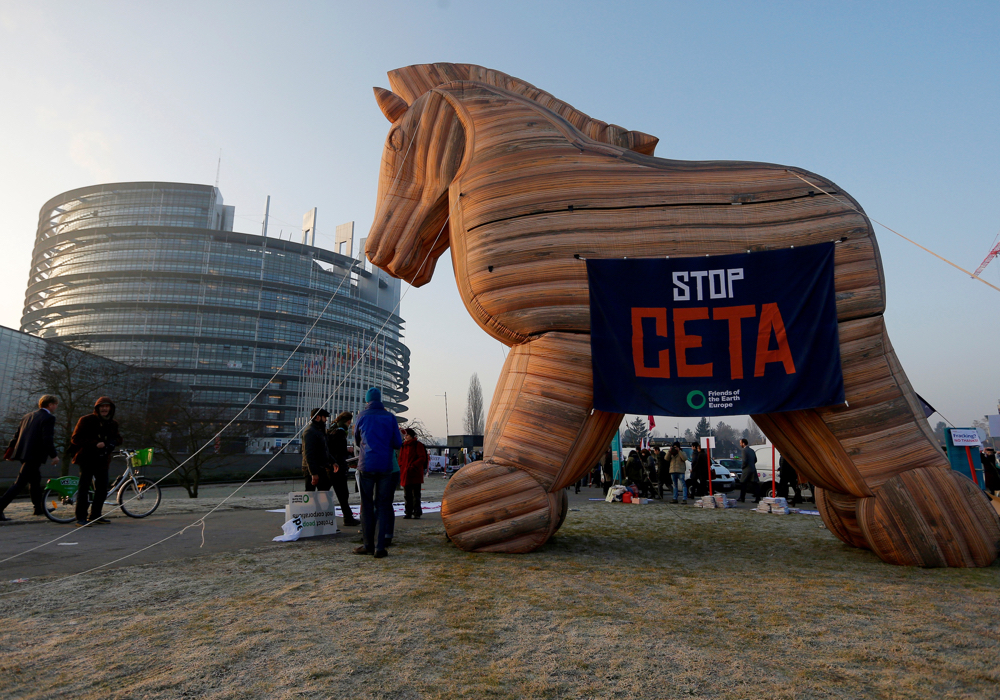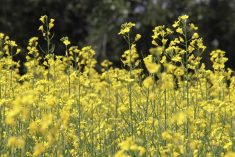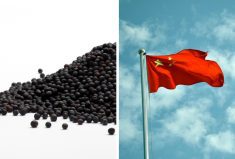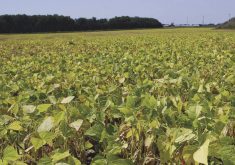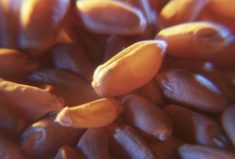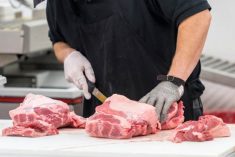Glacier FarmMedia – CETA is short for the Comprehensive Economic and Trade Agreement, but for many it’s become a term for frustration and disappointment.

“When CETA was signed and ratified three years ago, there were lots of promises,” said Doug Sawyer, a cow-calf producer from Pine Lake, Alta. and co-chair of the foreign trade committee for the Canadian Cattlemen’s Association.
“We’re still up against technical trade barriers. In terms of us accessing that market, it’s been proven to be more difficult than the spirit of the agreement.”
One of the promises was that the Canada-EU trade deal would generate an additional $1.5 billion in agri-food exports to Europe.
But “the deal has failed to deliver on its promises for Canada’s agri-food exports,” five former premiers, including former Manitoba premier Gary Doer, wrote in a letter to Prime Minister Justin Trudeau last month. The letter said both the EU Commission and EU member states continue to implement trade barriers for pork, beef, canola, sugar and grains.
Read Also

Manitoba Ag Days 2026: Local businesses gear up for Brandon farm show
Most of agriculture is seemingly at Manitoba Ag Days each January: Manitoba agribusinesses and farm groups look forward to connecting with farmers at the 2026 show.
Sawyer can bear witness to that as he’s been heavily involved in the negotiations to implement the deal.
He points to what was supposed to be one of the big Canadian wins — allowing 65,000 tonnes of Canadian beef to enter Europe tariff free each year. That would have boosted beef exports by $600 million annually.
“We felt the non-tariff quotation would be the same as ours,” said Sawyer. “You get 65,000 tonnes on a first-come, first-served basis. When you hit that, you start paying duty. That’s how it works here.”
However, European officials don’t see things the same way.
“The Europeans have a complex system in place that creates a lot of headaches and costs a lot of money to access that quota,” said Sawyer. “They’ve never upgraded their system to meet the spirit of CETA. That’s a big barrier.
“The other barriers are, of course, we still don’t have certification for our plants to use the cleaning processes that we do use. That’s something I don’t understand at all.”
The hoped-for beef exports to Europe now seem like fantasy numbers.
Last year, only 2,035 tonnes of Canadian beef — worth about $28 million — were sold to European buyers. Meanwhile, Europe sent 8,735 tonnes of its beef (worth $49 million) to Canada.
A long, complicated road
Sawyer has been on multiple trips to Europe negotiating and lobbying, and thinks the two cultures have different concepts of food safety. For example, if there’s a food-safety incident with meat in Europe, the focus tends to be on what may have occurred in the kitchen, while here it means an investigation of the processing plant — an approach meant to foster the highest possible standards.
“We’re talking apples to oranges here in terms of the concepts,” he said. “We have to take extra precautions (in processing) that they don’t over there, so in theory, our meat should be safer. But they don’t recognize our system. It’s extremely frustrating.”
Antimicrobial use is an issue, and the Europeans want on-farm inspection and certification.
Sawyer, who also backgrounds cattle, is still in the process of getting his ranch certified.
It’s been a long, complicated and costly process.
It starts with detailed record-keeping, with everything that’s given to every animal accounted for.
“We have to have an accurate record of all the drugs we’ve given them,” he said. “We have to show that we have no banned substances on our place, and if we do, how they’re controlled and how they’re managed with the cattle that don’t go into the EU program.
“It’s a fairly onerous program.”
Moreover, those records have to be certified by a CFIA-certified veterinarian — and that not only means paying for the vet to go through the documents, but also for travel time to and from the ranch. Sawyer said he is lucky because his vet is less than an hour from his ranch.
“But if you’re three hours away from a veterinarian, they have to drive all the way out there.”
Marketing is also more involved.
“You have to get these cattle to a market that will pay for them,” he said. “You don’t just dump your cattle at the auction mart and hope somebody buys them. You have to go on to a system such as BIXS (Beef InfoXchange System) or something like that to register them and to ensure that the people who are buying know that everything is done and done right.
“You’ve got to do some advertising in terms of letting people know when you’re selling your cattle, or sell them direct.”
Sawyer said he is going through the process “because I see value in the market” — but his experience isn’t an encouragement to others, he concedes.
“Even me, who has been negotiating and working with CCA, I haven’t done it yet. That doesn’t give our producers much confidence on this trade deal.”
Still the potential is there, he added, noting that a couple of summers ago, processing plants that were supplying European customers couldn’t source enough live animals certified for EU standards.
“We don’t want to return there,” he said. “We want to keep this thing moving forward. The opportunity there is terrific.”
Still, the EU is “an unwilling dance partner” despite numerous meetings with officials from both government and industry groups such as the Canadian Cattlemen’s Association, he said. And those meetings, now held virtually because of the pandemic, continue.
“It’s a long process, with politicians and committees and subcommittees. Our government and all the agricultural industries dealt in CETA in good faith, and we’re holding up our spirit of the bargain. We’re doing our part right. I’m not sure they are.”
Same story for canola
It’s a complaint echoed in the canola sector — even though its exports to the EU have surged in the past two years. Sale of canola seed to the EU (mostly for biofuel production) more than tripled in 2019 to 1.3 million tonnes — a figure already matched in the first eight months of this year.

“That being said, our frustrations with Europe have been that the promise of CETA was to improve the way our countries or regions worked together to make the trade flow more easily,” said Brian Innes, vice-president of public affairs with the Canola Council of Canada.
That hasn’t happened and there are a host of so-called ‘technical’ issues, not the least of which are the European view of pesticide use and how to account for greenhouse gas production from agriculture. Trying to find common ground has been an exercise in frustration, said Innes.
“Europe has been very difficult to work with, to find ways that we can bridge differences in the ways our countries broach technical issues,” he said. “Those technical issues make it difficult, if not impossible, to take full advantage of export opportunities.”
The EU has a lot of regulations around pesticide residues that are non-science based, he added.
“That means that Canadian farmers won’t be able to use safe pesticides and our exports will be at risk,” he said.
Even when canola seed is used for non-food use, there are many rules and regulations.
“With the system on biofuels, it’s a complex market. How much we get paid for our canola is related to how that canola is able to reduce greenhouse gas emissions for Europe,” said Innes, adding there are complex formulas involved.
On that single issue, his organization has spent five years dealing with European officials in hopes of figuring out how to create a fair number for calculating emissions.
“In essence, the response from the Europeans has been, ‘You measure things differently, therefore we can’t accept it,’” said Innes.
That goes against the intent of CETA, which was supposed to foster regulatory co-operation based on sound science, he said.
“The expectation of the agreement is that countries will work together to resolve these technical differences and we have not seen Europe coming to the table to be serious to make trade work,” he said.
While canola council officials can’t go to Brussels to meet this year, they are still meeting virtually, and are conducting meetings with customers and allies in Europe, including associations such as those representing grain processors and handlers.
The fact that Europe has lately become Canada’s third-largest canola buyer shouldn’t mask the underlying problems, Innes added.
“The issue is we’re not getting the value that we should be,” he said. “There is a significant risk for the future because of these non-science-based restrictions on pesticide residues.”
It’s a similar tale on the cereals side of things.
Sales of durum to Italy have surged in recent months driven by poor growing conditions in that country as well as a general trend during the pandemic of countries stocking up. But that just restores durum sales to roughly the same level they were before Italy introduced country-of-origin labelling on pasta in 2017.
“In our view, the spirit of CETA has been broken by the actions of the Italian government,” said Tom Steve, general manager of Alberta Wheat and Alberta Barley. “We’ve been urging the federal government, Agriculture Canada and our trade people to launch a WTO (World Trade Organization) challenge. They’ve been reluctant to do that. It’s just frustrating.”
Ultimately, the federal government and the EU need to mend what has become a broken agreement, he said.
When the deal was signed, there was a lot of optimism, said Steve, pointing, as an example, to hopes that increased beef sales to Europe would boost demand for barley here.
But today those hopes are pretty much gone, he said.
“We thought this agreement would open the door to new market opportunities. It has gone the other way.”
This article was originally published at the Alberta Farmer Express.


